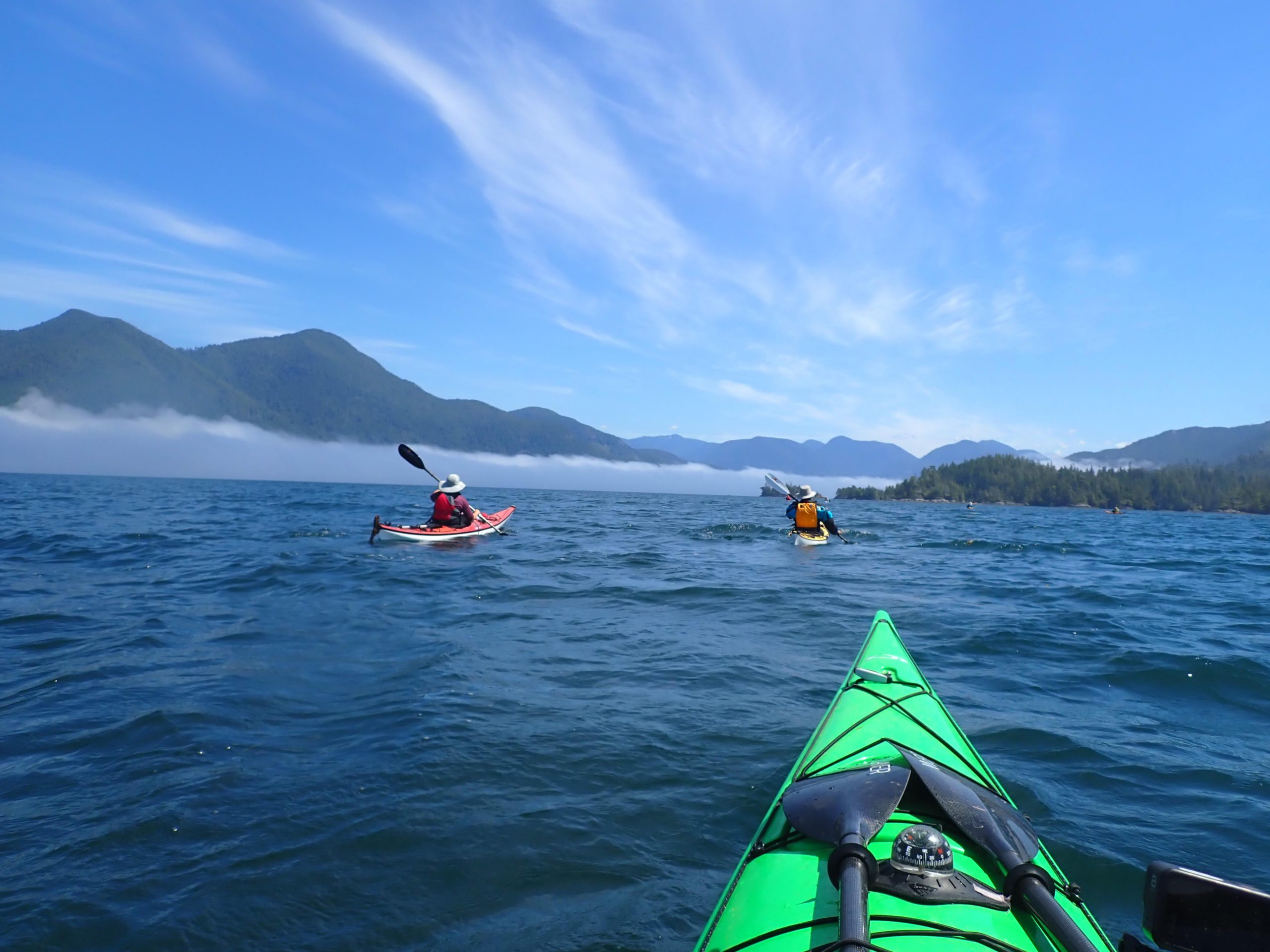Piloting
Keep track of your location using known landmarks. Reference materials are guidebooks, maps, and charts.
Ded Reckoning
Ded reckoning stands for deductive reckoning. This is used when no known landmarks can be seen such as at night or in the fog.
Tip
To use ded reckoning you need 6 things. You need to know:
-
- where your start point is
- where you want to end up
- a compass bearing to follow
- the amount of time it will take
- your group paddling speed (3kn average)
- the distance you are going
Equations for finding distance, speed, and time are: D= S x T, S= D/T, T= D/S
Example : 3 knots x 2 hours = 6 nm travelled
Things to consider that make ded reckoning inherently inaccurate: current, wind, unsteady paddling speed.
Aiming off– For example, if you are paddling for a point of land on an island, it’s best to aim for the fat part of the land so as not to miss and end up not knowing where you are.
Handrailing– using a shoreline to follow
Backstops– 2 types- physical features and time.
Physical backstop– for instance – you want to hit a creek for a water top up and there is a bay beyond it or a headland on the chart you would know that you have gone too far.
Time backstop– if you are navigating using ded reckoning and your calculations say you should have arrived at your destination by now you need to make a decision. The best course of action would be a 90* turn towards the largest, closest landmass.
Ranges– when two stationary objects are in line with your vantage point you have established a range. If you keep these two objects lined up you can be certain that you aren’t drifting off course.
Line of position– if you are directly between two objects shown on a chart, you are somewhere along the line between them.
Triangulation– using a compass to draw lines of position on a chart using known landmarks to more accurately pinpoint your position. The 3 points must be 90* or more apart for this to be accurate.
Circle of possibility– used to find out how far you can paddle in a day or on a trip.
For example, you have 6 hours to paddle for a day trip. Your average speed will be 2 knots( allowing for sightseeing, lunch, and rest stops).
So 6 hrs x 2 knots =12 nm
So this means you could paddle 6 nm out and 6 nm back. Building in a safety factor in case you face a headwind on the way back, maybe you only go 5 nm out. Now take a drafting compass and measure 5 nm and draw a circle from the launch point. You now have a circle of possibility.
Navigation Forms for Kayakers
Click to download PDF

